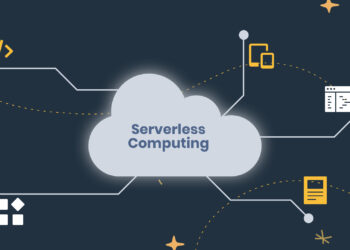In today’s hyper-competitive digital landscape, speed is the ultimate currency. Businesses that can innovate, deploy, and scale faster than their rivals are the ones that win. For years, traditional monolithic architectures, while reliable, have become anchors, slowing down development cycles and hindering the ability to adapt to ever-changing market demands. This is where a fundamental paradigm shift has taken root, a transformative approach designed specifically for the era of the cloud. This approach is known as cloud native architecture, and it is no longer a niche concept but the definitive standard for building and running modern, resilient, and scalable applications.
But what does “cloud native” truly mean? It’s a term that extends far beyond simply hosting an application on a cloud provider like AWS, Google Cloud, or Azure. It represents a profound change in how we think about, build, and operate software. It’s about leveraging the full power of the cloud computing model to achieve unprecedented levels of agility and resilience. A cloud native approach allows organizations to build and run scalable applications in dynamic environments, incorporating core principles like microservices, containers, dynamic orchestration, and a culture of automation.
This article serves as a comprehensive guide to understanding the world of cloud native architectures. We will deconstruct its core pillars, explore the tangible business benefits it unlocks, navigate the inherent challenges of its adoption, and look toward its exciting future. For any organization looking to not just survive but thrive in the digital age, mastering the principles of cloud native is no longer an option—it’s a strategic imperative.
Deconstructing Cloud Native: Moving Beyond the Buzzword
To truly grasp the significance of cloud native, one must first understand the limitations of what came before it. Traditional application development often resulted in large, monolithic codebases. In a monolith, all functionalities are interwoven into a single, tightly-coupled unit. Deploying a small change requires testing and redeploying the entire application, a process that is slow, risky, and resource-intensive. Scaling a monolith is equally inefficient; if one small function experiences high traffic, you must scale the entire application, wasting computational resources on components that don’t need it.
This “lift-and-shift” model, where monolithic applications are simply moved to run on cloud servers, fails to capitalize on the cloud’s true potential. It’s like owning a high-performance race car but only ever driving it in city traffic—you’re not using it for what it was built for.
Cloud native architecture flips this model on its head. As defined by the Cloud Native Computing Foundation (CNCF), the organization that stewards key open-source projects like Kubernetes, cloud native technologies empower organizations to build and run scalable applications in modern, dynamic environments. The goal is to enable loosely coupled systems that are resilient, manageable, and observable. Combined with robust automation, they allow engineers to make high-impact changes frequently and predictably with minimal toil.
In essence, cloud native is an architectural and cultural philosophy that embraces the cloud’s inherent characteristics: on-demand resources, global distribution, and a software-defined infrastructure. It’s about building applications for the cloud, not just on the cloud. This distinction is the key to unlocking the revolutionary benefits of speed, scalability, and efficiency that modern businesses crave.
The Four Pillars of a True Cloud Native Architecture
A robust cloud native strategy is built upon several interconnected and mutually reinforcing pillars. These are not just technologies but a combination of tools, practices, and cultural philosophies that work in concert to deliver on the promise of agility and resilience.
A. Microservices: The Power of Small, Independent Services
At the heart of cloud native design is the microservices architectural style. This approach involves breaking down a large, monolithic application into a collection of smaller, independently deployable services. Each service is designed around a specific business capability, has its own codebase, is managed by a small, dedicated team, and communicates with other services through well-defined APIs (Application Programming Interfaces).
Imagine a large e-commerce application. In a monolithic world, the user interface, product catalog, shopping cart, and payment processing are all part of one massive unit. With microservices, each of these becomes a separate service. This separation provides profound advantages. A change to the payment processing service can be developed, tested, and deployed without touching the product catalog. If the shopping cart service fails, it doesn’t necessarily bring down the entire application; users might still be able to browse products. Furthermore, you can scale the product catalog service independently to handle high Browse traffic without scaling the less-used payment service, leading to significant cost savings. This granular control is fundamental to achieving both speed and operational efficiency.
B. Containerization: Consistency and Portability Unleashed
If microservices are the architectural blueprint, containers are the building blocks that make it a reality. A container is a lightweight, standalone, executable package of software that includes everything needed to run it: code, runtime, system tools, system libraries, and settings. The most popular containerization technology is Docker, but others like Podman are also used.
Containers solve the age-old problem of “it works on my machine.” By bundling the application and its dependencies together, containers ensure that the software runs identically and consistently, regardless of the underlying environment—be it a developer’s laptop, a testing server, or a production cloud instance.
However, managing thousands of containers across a fleet of servers would be impossible manually. This is where container orchestration comes in. Kubernetes, an open-source project originally developed by Google and now managed by the CNCF, has emerged as the de facto standard for orchestrating containers. Kubernetes automates the deployment, scaling, healing, and networking of containers. It decides where to run containers, how to connect them, and how to replace them if they fail, creating a self-healing and resilient system that is the bedrock of any serious cloud native deployment.
C. Continuous Integration & Continuous Deployment (CI/CD): The Automation Engine
To achieve the speed and agility promised by cloud native, manual processes must be eliminated wherever possible. This is the role of CI/CD. It represents a pipeline of automated processes that allows developers to deliver code changes more frequently and reliably.
- Continuous Integration (CI): This is the practice of developers frequently merging their code changes into a central repository. After each merge, an automated build and test sequence is triggered. The goal is to detect integration issues early, preventing them from becoming larger problems later.
- Continuous Deployment (CD): This practice takes CI a step further. After the build and tests are successful, the changes are automatically deployed to a testing or production environment.
A robust CI/CD pipeline is the engine of a cloud native organization. It dramatically reduces the risk associated with releases, allowing teams to deploy small changes multiple times a day rather than large, risky changes once every few months. This rapid feedback loop accelerates innovation and allows businesses to respond to customer needs almost instantly.
D. DevOps Culture: Breaking Down the Silos
The final, and arguably most critical, pillar is not a technology but a cultural one: DevOps. DevOps is a set of practices that combines software development (Dev) and IT operations (Ops). It aims to shorten the systems development life cycle and provide continuous delivery with high software quality.
In a traditional organization, development and operations teams are often siloed, with conflicting goals. Developers are incentivized to create new features quickly, while operations are incentivized to maintain stability, which often means resisting change. This friction creates bottlenecks and slows everything down.
DevOps breaks down these silos. It fosters a culture of collaboration, shared ownership, and mutual responsibility. In a DevOps culture, teams are responsible for their applications from “cradle to grave”—from initial design through development, testing, deployment, and operation. This shared ownership model is essential for the success of microservices, as the teams that build a service are also the ones best equipped to run and maintain it. DevOps is the cultural glue that holds the technical pillars of cloud native together.
The Tangible Business Benefits of Going Cloud Native

Adopting cloud native architecture isn’t just a technical upgrade; it’s a strategic business decision that yields significant, measurable returns. The shift directly impacts the bottom line and a company’s competitive positioning.
A. Unprecedented Agility and Speed to Market
By combining microservices with CI/CD automation, organizations can drastically accelerate their time to market. Small, autonomous teams can work on different services in parallel. The automated pipeline allows for features to move from an idea to production in a matter of hours or days, not months. This agility enables businesses to experiment with new ideas, gather customer feedback quickly, and pivot their strategy based on real-world data, ensuring they stay ahead of the curve.
B. Enhanced Scalability and System Resilience
Cloud native systems are designed for scale and built to withstand failure. Thanks to the microservices architecture, individual components can be scaled independently based on their specific load, which is far more cost-effective than scaling a monolith. Kubernetes’ automated orchestration can automatically add or remove container instances in response to traffic (auto-scaling). Furthermore, the distributed nature of the system improves resilience. The failure of a single, non-critical service will not cause a catastrophic failure of the entire application, leading to higher uptime and a better user experience.
C. Significant and Continuous Cost Optimization
While the initial investment in a cloud native transformation can be substantial, the long-term cost savings are significant. Efficient resource utilization through containerization and auto-scaling means you only pay for the computing resources you actually consume. The reduction in manual operational tasks through automation frees up highly-skilled engineers to focus on value-added work instead of tedious maintenance. Over time, this operational efficiency leads to a lower Total Cost of Ownership (TCO).
D. A Culture That Fosters Sustained Innovation
Perhaps the most powerful benefit is the culture of innovation that cloud native enables. When developers are empowered with automated tools and loosely coupled architectures, the cost and risk of experimentation plummet. They can try out new technologies, build a new service, and deploy it to a subset of users without jeopardizing the core product. This freedom to innovate safely and quickly is the engine of long-term growth and market leadership.
Navigating the Inevitable Challenges of Cloud Native Adoption
Despite its immense benefits, the journey to cloud native is not without its challenges. It is a complex undertaking that requires careful planning, new skills, and a fundamental shift in organizational culture.
A. The Complexity Chasm of Distributed Systems
While a monolithic application can be complex, a distributed microservices architecture introduces a new level of complexity. Instead of one thing to manage, you now have dozens or even hundreds of moving parts. Issues like network latency, service discovery, distributed data management, and security between services become paramount. To manage this, a new layer of tooling known as a “service mesh” (e.g., Istio or Linkerd) is often required to control and observe the traffic between services, adding another layer of technology to learn and manage.
B. The Deep-Rooted Cultural Shift
Technology is often the easy part; changing people and processes is much harder. Transitioning to a DevOps culture requires breaking down long-standing departmental silos and changing ingrained habits. It demands a move from a command-and-control mindset to one of trust, collaboration, and shared responsibility. This cultural transformation is often the biggest and most underestimated hurdle in any cloud native adoption journey.
C. Rethinking Security for a Distributed World
In a monolithic world, security was often focused on protecting the perimeter. In a cloud native architecture, the perimeter is gone. With services communicating over a network, every API call is a potential attack vector. This necessitates a shift to a “zero-trust” security model, where nothing is trusted by default, and every request must be authenticated and authorized. Security must be integrated into every step of the CI/CD pipeline, a practice known as DevSecOps.
D. The Ever-Present Skills Gap
Cloud native technologies like Kubernetes, Prometheus, Istio, and various CI/CD tools are complex and require specialized expertise. There is a significant global shortage of engineers with deep experience in these areas. Organizations must invest heavily in training their existing staff and compete fiercely to attract new talent, which can slow down adoption and increase costs.
The Future is Cloud Native: Emerging Trends to Watch
The world of cloud native is constantly evolving. The principles remain the same, but the technologies and patterns continue to advance, pushing the boundaries of what is possible.
Serverless computing, also known as Functions-as-a-Service (FaaS), represents the next logical step in abstraction. With serverless, developers write and deploy code in the form of functions without managing any underlying infrastructure at all—not even containers. The cloud provider automatically provisions resources and scales them in response to demand, from zero to massive scale.
Other emerging trends include the rise of WebAssembly (Wasm) as a universal, high-performance runtime for cloud native applications, offering even better portability and security. We are also seeing the increasing convergence of AI/ML workloads with cloud native platforms, as Kubernetes becomes the standard for orchestrating complex machine learning training and inference pipelines. Finally, as systems become more complex, the field of observability—going beyond traditional monitoring to understand a system’s internal state—is becoming critical, powered by AI-driven tools in a practice known as AIOps.
A Strategic Imperative for a Digital-First World
Cloud native architecture is far more than a collection of new technologies or industry buzzwords. It is a fundamental, strategic shift in how we build and operate software to compete in the digital age. By embracing the core pillars of microservices, containers, CI/CD automation, and a deeply ingrained DevOps culture, organizations can unlock transformative benefits. The result is a business that is more agile, resilient, efficient, and innovative—one that can respond to market changes at lightning speed and deliver continuous value to its customers.
The path to cloud native is challenging, demanding significant investment in technology, people, and culture. However, the alternative—remaining tied to the slow, brittle, and inefficient models of the past—is no longer a viable option. In a world where digital capabilities define market leaders, adopting a cloud native approach is the ultimate strategy for building a future-proof, thriving enterprise.

















